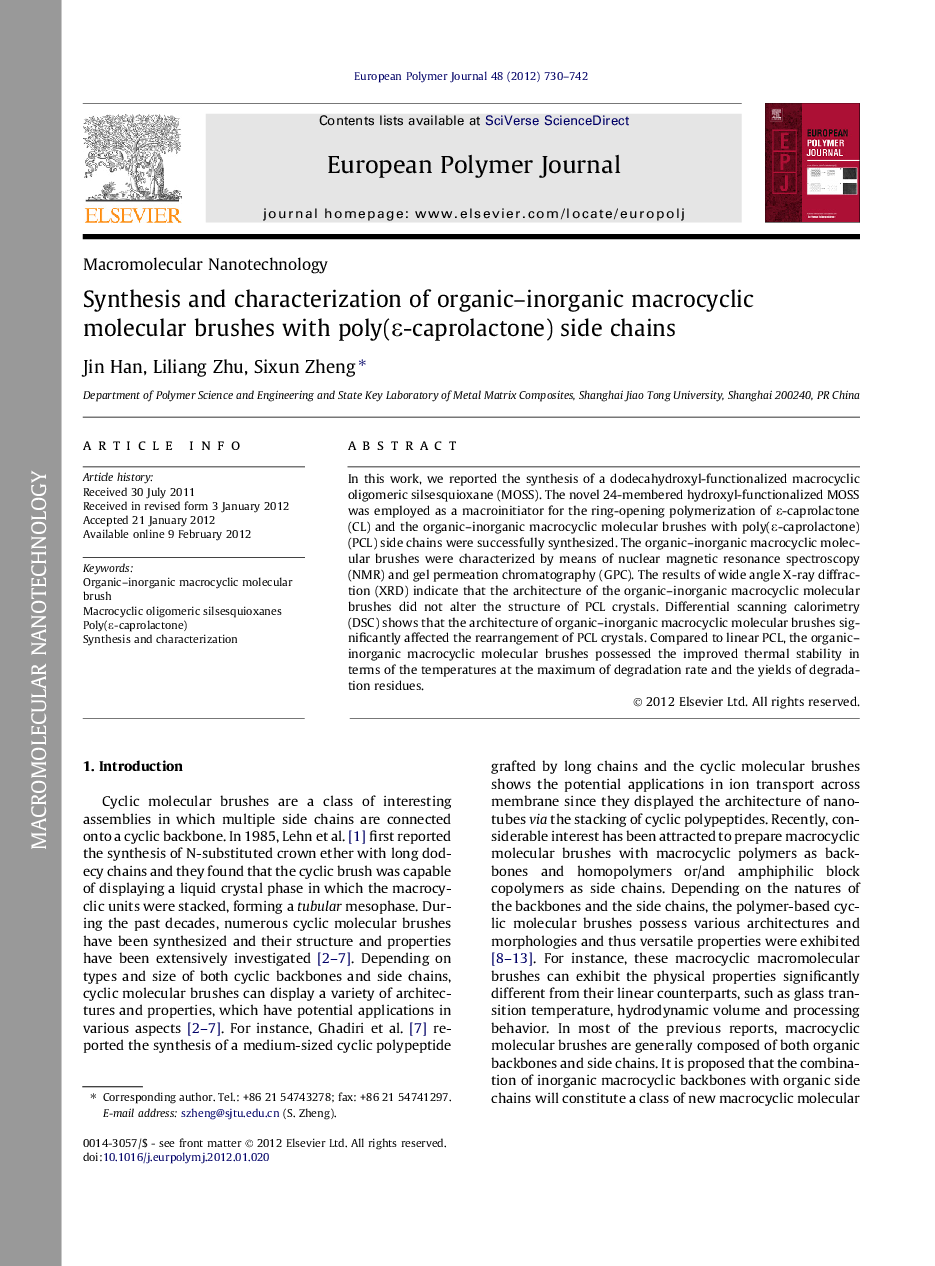| Article ID | Journal | Published Year | Pages | File Type |
|---|---|---|---|---|
| 1400604 | European Polymer Journal | 2012 | 13 Pages |
In this work, we reported the synthesis of a dodecahydroxyl-functionalized macrocyclic oligomeric silsesquioxane (MOSS). The novel 24-membered hydroxyl-functionalized MOSS was employed as a macroinitiator for the ring-opening polymerization of ε-caprolactone (CL) and the organic–inorganic macrocyclic molecular brushes with poly(ε-caprolactone) (PCL) side chains were successfully synthesized. The organic–inorganic macrocyclic molecular brushes were characterized by means of nuclear magnetic resonance spectroscopy (NMR) and gel permeation chromatography (GPC). The results of wide angle X-ray diffraction (XRD) indicate that the architecture of the organic–inorganic macrocyclic molecular brushes did not alter the structure of PCL crystals. Differential scanning calorimetry (DSC) shows that the architecture of organic–inorganic macrocyclic molecular brushes significantly affected the rearrangement of PCL crystals. Compared to linear PCL, the organic–inorganic macrocyclic molecular brushes possessed the improved thermal stability in terms of the temperatures at the maximum of degradation rate and the yields of degradation residues.
Graphical abstractIn this contribution, we reported the synthesis of a novel dodecahydroxyl-functionalized macrocyclic oligomeric silsesquioxane (MOSS) and its use as a macroinitiator of ring-opening polymerization for organic–inorganic macrocyclic molecular brushes with poly(ε-caprolactone) side chains.Figure optionsDownload full-size imageDownload as PowerPoint slideHighlights► A macrocyclic oligomeric silsesquioxane (MOSS) bearing 12 hydroxyls was prepared. ► The MOSS was used to synthesize macrocyclic molecular brushes with PCL side chains. ► The structure and properties of the macrocyclic molecular brushes were studied.
